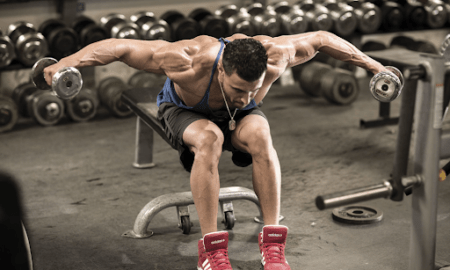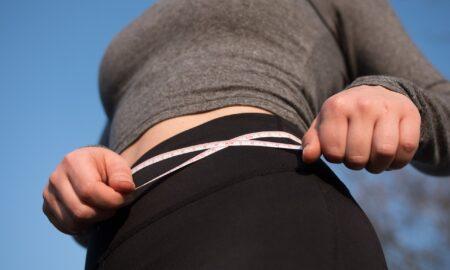Q: I turn 50 next month. I’ve been training for almost 10 years, but I’ve never competed. I want to compete in a drug-tested over-50 bodybuilding contest next May. I’ve already entered to make myself diet and get ready. My main fear is losing muscle. I’m 5’11” and weigh 230 pounds right now. My bodyfat is probably about 16 percent. What’s the best way to go about this from a training and diet standpoint?
A: In my experience, a drug-free person at your height with nearly that much bodyfat would really be lucky to weigh 190 to 195 pounds the day of the show—and that is probably on the high side. Depending on how thick the fat and how stretched the skin is around your midsection and any other places that you hold fat, you may need to diet much longer than you think.
Most of the advice I see tells people to diet for 12 weeks for a contest. Because you’ve never competed and don’t truly know what it will take to look great the day of the show, that common time frame won’t be enough. Start figuring everything out and dieting now, even though the show is some nine months away.
I would say that you need to start eating primarily chicken—without skin—egg whites, wild salmon and other coldwater fish and mostly vegetables for your carbohydrates. You have at least 30 pounds of fat to shed, and you may end up losing more muscle than you’d like—unless you’re ready months before the contest so that you have time for your skin to tighten up—assuming that it indeed will tighten up. Also adjust your carbohydrate intake so that you’re eating more as you get closer to the contest, which should make your muscles fuller. Finally, you really want to see what’s under that fat before you go into any contest.
Take your bodyweight down slowly. Reduce your calories to 225 grams of protein over four or five meals, and eat loads of steamed vegetables—275 to 350 grams over four to five meals. Also include a handful of almonds or other nuts that contain mainly monounsaturated fat. That’s your diet. If you can’t get enough protein from food, use whey protein with water, but don’t try anything exotic now. You just need to diet and let your body and mind get used to it.
The idea is to get rid of as much fat as possible over the next five months or more. Then see what you have to work with and train at that bodyweight for a while. At first you might lose quite a bit of strength, especially on multijoint exercises; however, if your body is down to 4 percent bodyfat, you can start training harder and take in more carbohydrates and find out where you’re burning them optimally. In other words, you want to be ready months early so that you can experiment. That way you can actually see that you’re adding muscle while keeping the fat off. You may get down as low as 185 to be totally ripped and the skin tight—or the skin may not be tight until you’ve gone through that second stage and then added carbs to fill in the muscle. Your weight doesn’t matter—the only thing that matters is how you look. If you can train hard and slowly add more carbohydrates, you can get that bodyweight back up without looking as if you haven’t eaten in years.
Keep using primarily heavy weights on your multijoint exercises and moderately heavy on isolation exercises. For instance, on the bench press your rep count should stay between six and 10; for flyes, 10 to 12. If you find yourself struggling to get five reps on the bench with a weight that you used for 10, drop down and get six to eight good ones. When you’re onstage, they don’t ask you, “How much can you bench, number 38?” So stick with the plan and don’t get injured.
The key is being ready early so that you can experiment a little with how and when you look best. Don’t do water depletion, sodium loading, potassium loading or other exotic last-minute methods—keep it simple. You may want to restrict water a bit the day before and the day of the show, but that’s all. The main thing is to bring yourself down slowly and get to the weight where you can see all your abdominal and lower-back muscles. Then you have time to keep track of what daily carbohydrate and fat intakes make you look best.
Bodybuilding competition is an art first and a science second. Keep notes for next year’s show—even though what works this time may not work again. That’s what makes it so interesting—and a little frustrating—but what a fun challenge!
Editor’s note: Contact Paul Burke via e-mail at [email protected]. Burke has a master’s degree in integrated studies from Cambridge College in Cambridge, Massachusetts. He’s been a champion bodybuilder and arm wrestler, and he’s considered a leader in the field of over-40 fitness training. You can purchase his book, Burke’s Law—a New Fitness Paradigm for the Mature Male, from Home Gym Warehouse. Call (800) 447-0008, or visit www.Home-Gym.com. His “Burke’s Law” training DVD is also now available. IM




















You must be logged in to post a comment Login